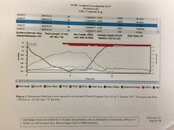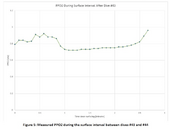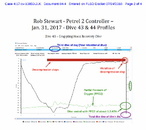Two respected dive instructors in the article are quoted as saying "one dive per day is the limit for deep dives"
Sorry guys, I'm calling BS if you are referring to the depths referenced in the movie. What studies or evidence can you provide to prove me wrong?
Thanks for the heads-up... I didn't realise Jill and I were quoted in Rob's article.
Something to consider when thinking about our responses was the question we were asked. The dives in question -- I understood -- were in excess of 68 metres.
Another consideration is what we answered. Indeed, how each of our answers was framed.
For me -- and it was just my opinion -- a dive beyond 68 metres with a rebreather and bailout bottles and a camera in a current (it's called the Gulf Stream), is hard work. ESPECIALLY since I was told the ascents were not the customary Gulf Stream drifts, but pulling back up a static line.
Of course, I am twice the victim's age, and that counts for something. (An interesting point from many aspects.) From my perspective, two dives like that conducted within a few hours of each other carrying that gear load, would require a pretty huge incentive. Three I would never attempt.
As others have mentioned, I have done and will probably do again, three deep dives in a working day. However, I would lay good odds they will be in a cave with little to zero current and any camera kit being carried will be a paralenz and a small lighting tray.
As for the "evidence" as Sotis asked for in Rob's documentary, when Rob and I spoke about this incident I cited community best practice. I've been involved with writing standards for technical programs in the past, and more so now at RAID, and the evidence I'd offer Sotis and that I offered to Rob was the singular lack of support in technical agency training standards for three dives beyond 68 metres in a working day... not 24 hours... but a working day. It simply isn't kosher.
We can do as we wish outside of training... well, most are free to... but there is also the gravity of that wavy, shadowy, string-theory like demarcation line between fine and foolish for an instructor diving with a student. He or she is expected to behave in a manner that will not throw discredit on the agency, etc., etc. Which some individuals, perhaps the one being interviewed on screen in Rob's film, seem to feel translates into a bit of a buzz-kill.
However, in this particular case, the end result was a huge cluster ****, and probably serves as a bit of a learning experience for all involved, n'est pas?






